SUMMARY
This is AI generated summarization, which may have errors. For context, always refer to the full article.
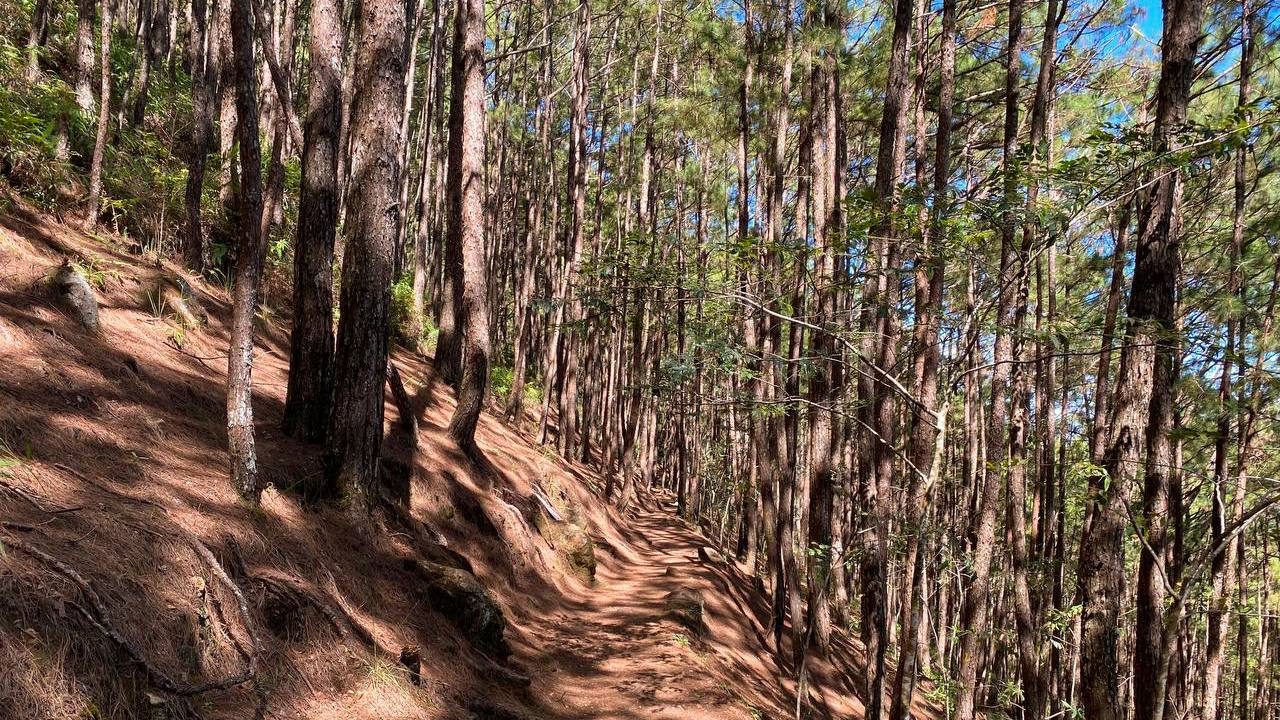
BENGUET, Philippines – From a view deck within Camp John Hay (CJH) Forest Reserve in Baguio City, a visitor can see the roofs at Happy Hollow village and Benguet mountains from a distance.
Not as popular as the usual tourist spots and facilities inside CJH are trails where one can go forest bathing, a mindful practice of relaxing in nature.
The camp’s forest trails offer respite from the swarm of tourists that put the city on a chokehold, especially during long weekends, holidays, or summer.
The disparity between the tranquil view from the forest and the heavy foot traffic in Session Road and Burnham Park shows the contrasting environment in Baguio.
For a city known for its pine trees and cool mountain breeze, its green spaces are slowly diminishing.
Global Forest Watch says that from 2002 to 2022, Baguio lost 2 hectares of humid primary forest. According to CJH management, the camp makes up half of Baguio’s last remaining forest cover. Some portions are covered by the Lower Agno Watershed Forest Reserve.
That’s why they call the forest reserve the lungs of the city, said Editha Mejia, CJH’s environment manager.
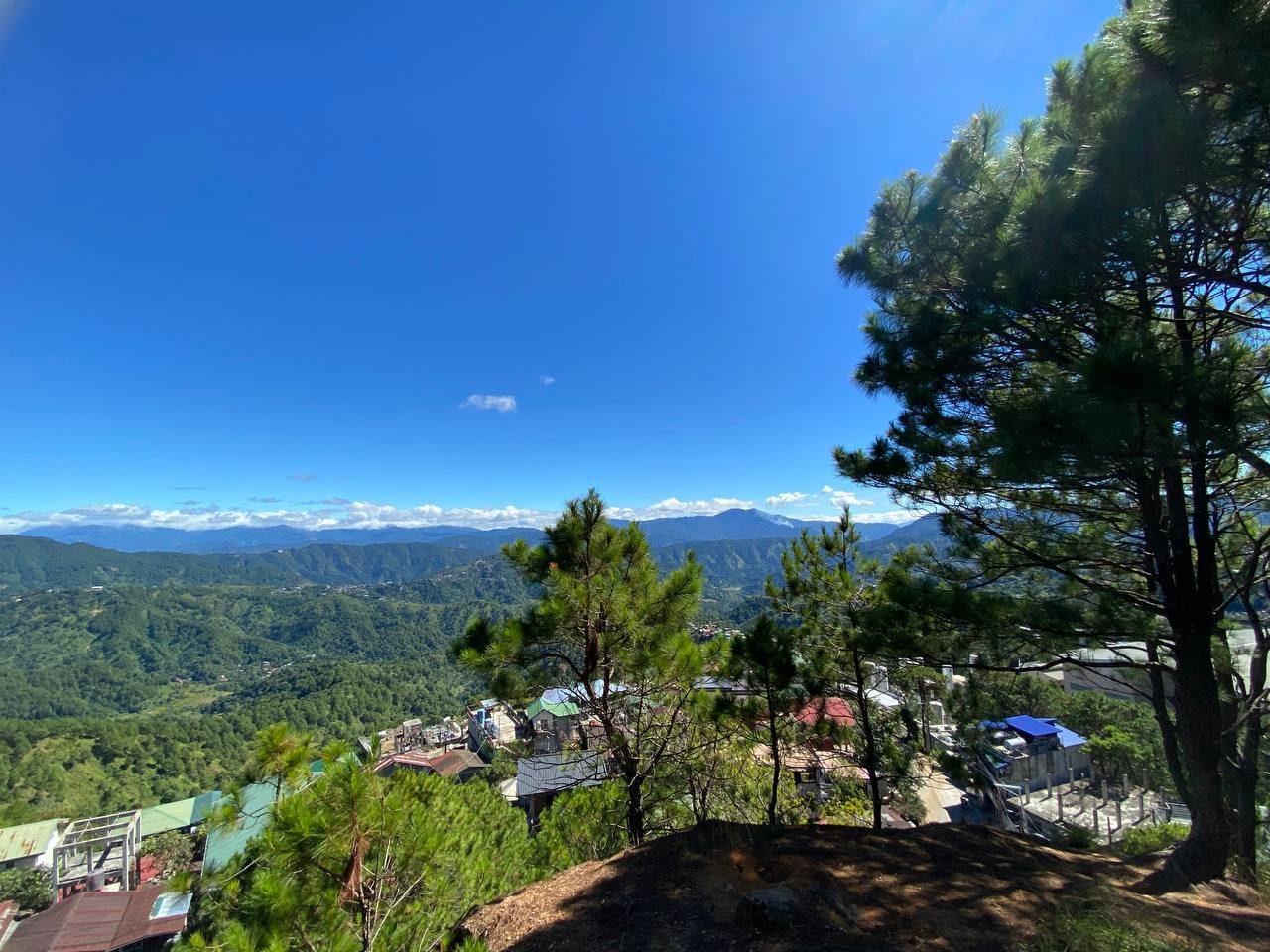
Back in 1993, then-President Fidel V. Ramos turned the former American military base into a forest reserve, putting it under the stewardship of the Bases Conversion and Development Authority.
“In the past, we used the term ‘lungs of the city,’ because indeed, where does the city breathe? Where is the air filtered? There in the forested areas. That’s why we called it the lungs of the city,” Mejia told Rappler inside their empty office overlooking the pine trees of the camp.
CJH is divided into the 301-hectare John Hay Special Economic Zone, where the businesses are located, and the John Hay Reservation Area, which covers 324 hectares.
Mejia’s team is tasked to take care of the biodiversity and conservation of the reservation area.
A walk in the woods
Inside the forest reserve are color-coded trails.
The most famous one is the yellow trail. One can go through the route from Le Monet to the Butterfly Sanctuary, or vice versa. There’s no guide as the path is pretty much straightforward.
The trail is undulating, covered by roots and surrounded by pine trees. The fragrance of pines recalls summer childhood memories and Christmas past. Since the weather is cool, exercise is more bearable and enjoyable.
Some parts of the trail in Camp John Hay have been included in the routes of a number of trail races too.
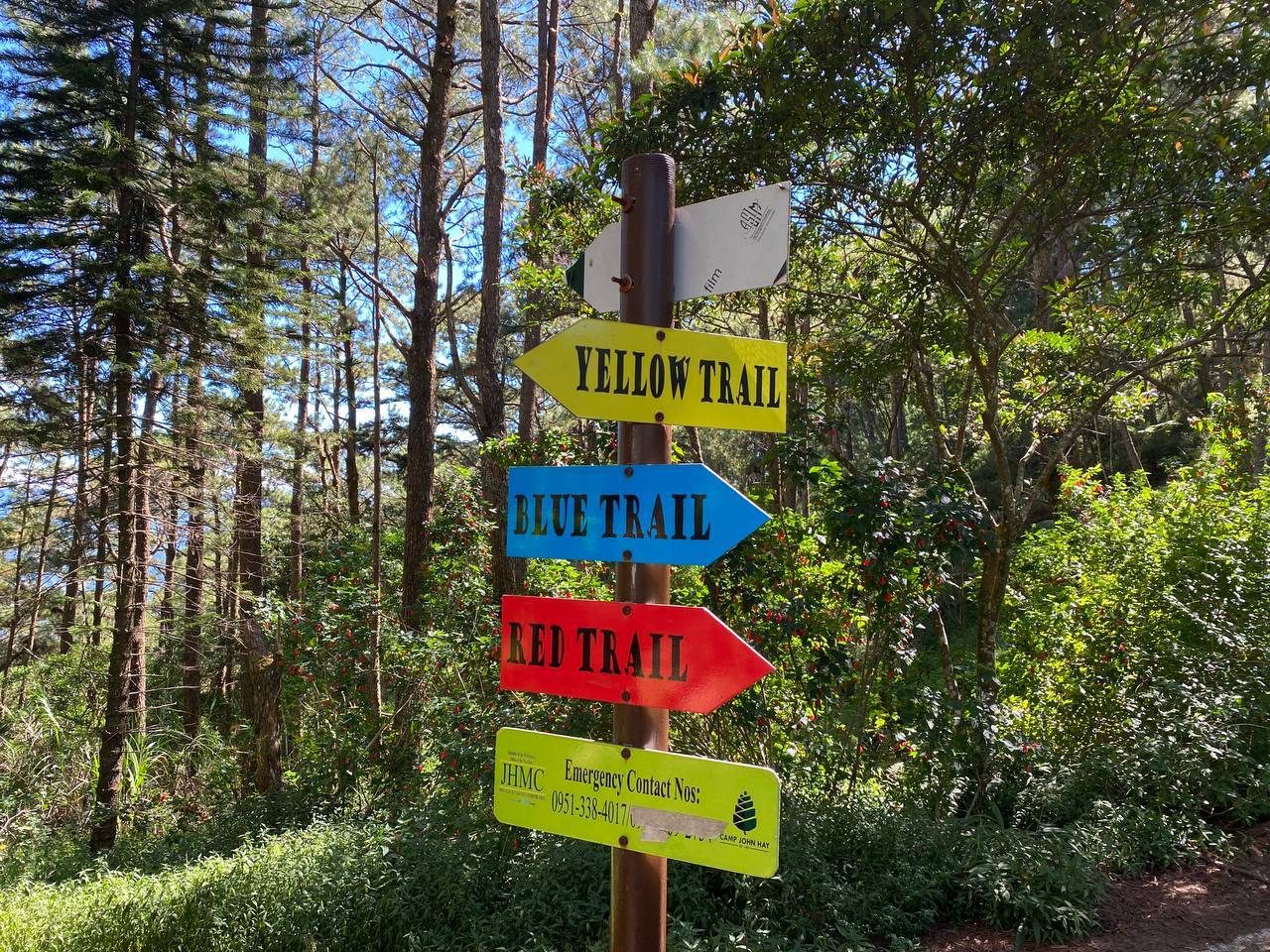
Forest bathing is hardly a novel idea. It’s been a common activity for many people even before the Japanese coined the term shinrin-yoku or forest bathing.
Spiritual leaders of different faiths, endurance athletes, poets, the everyday flâneurs have found calm in forest bathing. It’s a simple practice that’s getting rarer amid rampant urbanization.
It’s also a break from technology, and a way to reconnect with nature.
The preservation of green spaces like in CJH contributes to human wellness, said Zenaida Baoanan, biology professor at University of the Philippines (UP) Baguio.
“We are reminding ourselves that we are connected with the environment,” Baoanan told Rappler in an interview.
Preserving character, conserving forests
For Mejia, who has been working in CJH for the past 14 years, preserving the forest means preserving the place’s character, which she links to the city’s enduring image––the pine tree.
One of her team’s main concerns in terms of preservation: the invasive species inside CJH and their relationship to the native flora and fauna they seek to protect.
“If this certain area gets overwhelmed by invasive species, there might come a time when you won’t see Benguet pine here,” she said in a mix of Filipino and English. “That’s the character of Camp John Hay: the Benguet pine.”
The late Baguio journalist and environmental advocate Ramon Dacawi wrote in a 2018 piece about the vulnerability of pine trees amid development projects.
“The [sensitivity] of pine was seen in the case of Camp John Hay. When earth-moving was done to level sites for residential houses of the rich inside the former military rest and recreation center, the trunk base of some mature pines were covered by soil,” Dacawi wrote.
“The soil cover, measuring only a foot or two, choked the mature pine, killing them softly, slowly, surely and silently. That’s how sensitive our pine, whose fading scent we now pine for – resident and visitor alike.”
CJH management is currently in partnership with UP Baguio, Benguet State University, Don Mariano Marcos Memorial State University, Department of Environment and Natural Resources for a study on the proliferation of invasive species in the area.
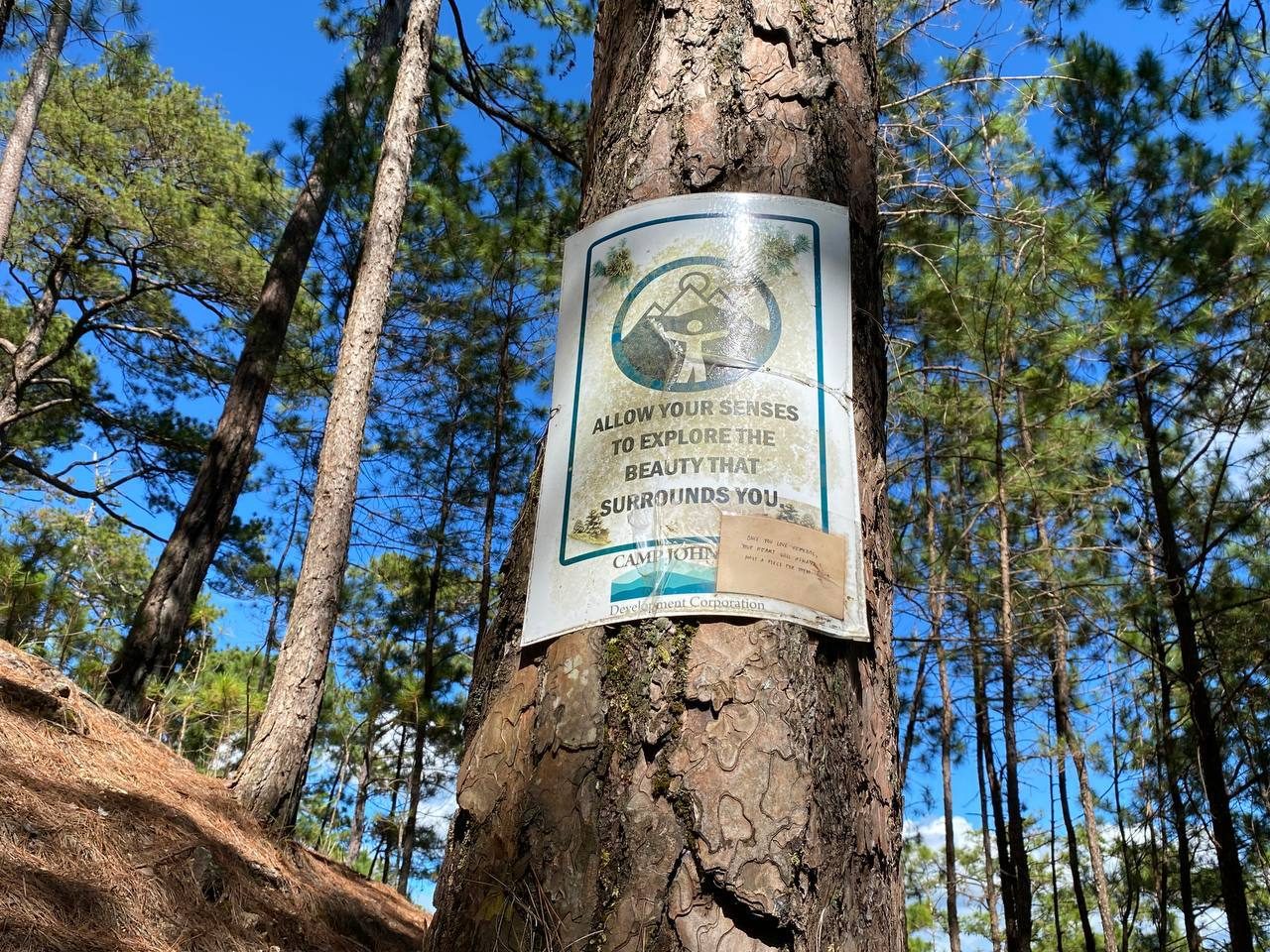
Mejia said they are now geared toward improving the ecosystem within the forest reserve, to restore native plants in the area and eventually introduce native animals.
In the future, they hope that whatever findings they gather from the study will be used by policymakers for the rest of the city.
The ongoing study uses 2003 as a baseline, said Baoanan. The professor said they have observed that there are now more invasive species than what was recorded two decades ago.
“We’re seeing it now when we pass by going to Loakan. We passed by the roadside of Camp John Hay, where the African tulips and caliandra have been proliferating,” Baoanan said.
African tulips and calliandras are among the exotic species they have initially identified to be abundant in the area.
While it’s still a long way before the studies are completed, Baoanan is hopeful that their efforts will pave the way for the establishment of better quality green spaces not just in Baguio but also in the rest of the country.
Referring to the condition of the soil, the flora and fauna in the area, Baoanan said, “While we have some efforts to maintain the urban green spaces, we also need to think about the quality of the spaces.”
These are some of the questions Baoanan hopes officials will ask: Are exotic species taking water and nutrients from native species? Are native animals coming back to the place? Are humans managing the place correctly, especially on what to plant and what to weed out?
Sunday stroll
On a Sunday morning, two families with some distance apart were ambling on the yellow trail. The air felt cool.
The serenity can make one understand the mechanics of how a city breathes, and be emphatic about the cause of preserving the forest.

Outside, tourists were milling around food stalls. Young people were getting their pictures taken among the pine trees. Some were rehearsing a dance number or what could be a school play out in the open fields.
Beyond the Bell House is a nursery where seedlings of Benguet pine are lined up under the sun. They will be ready next year for planting. – Rappler.com
Add a comment
How does this make you feel?
















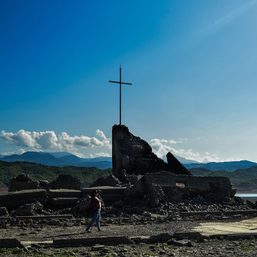
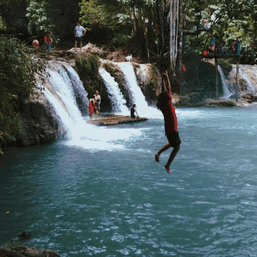
![[WATCH] #ShareAsia: Winter flower viewing at Hasedera in Kamakura, Japan](https://www.rappler.com/tachyon/2024/03/hasedera-tcard-LS.jpg?resize=257%2C257&crop_strategy=attention)
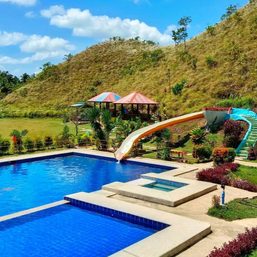


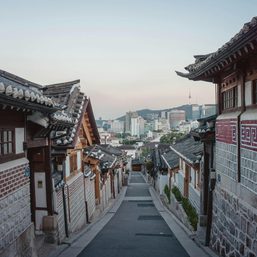

There are no comments yet. Add your comment to start the conversation.